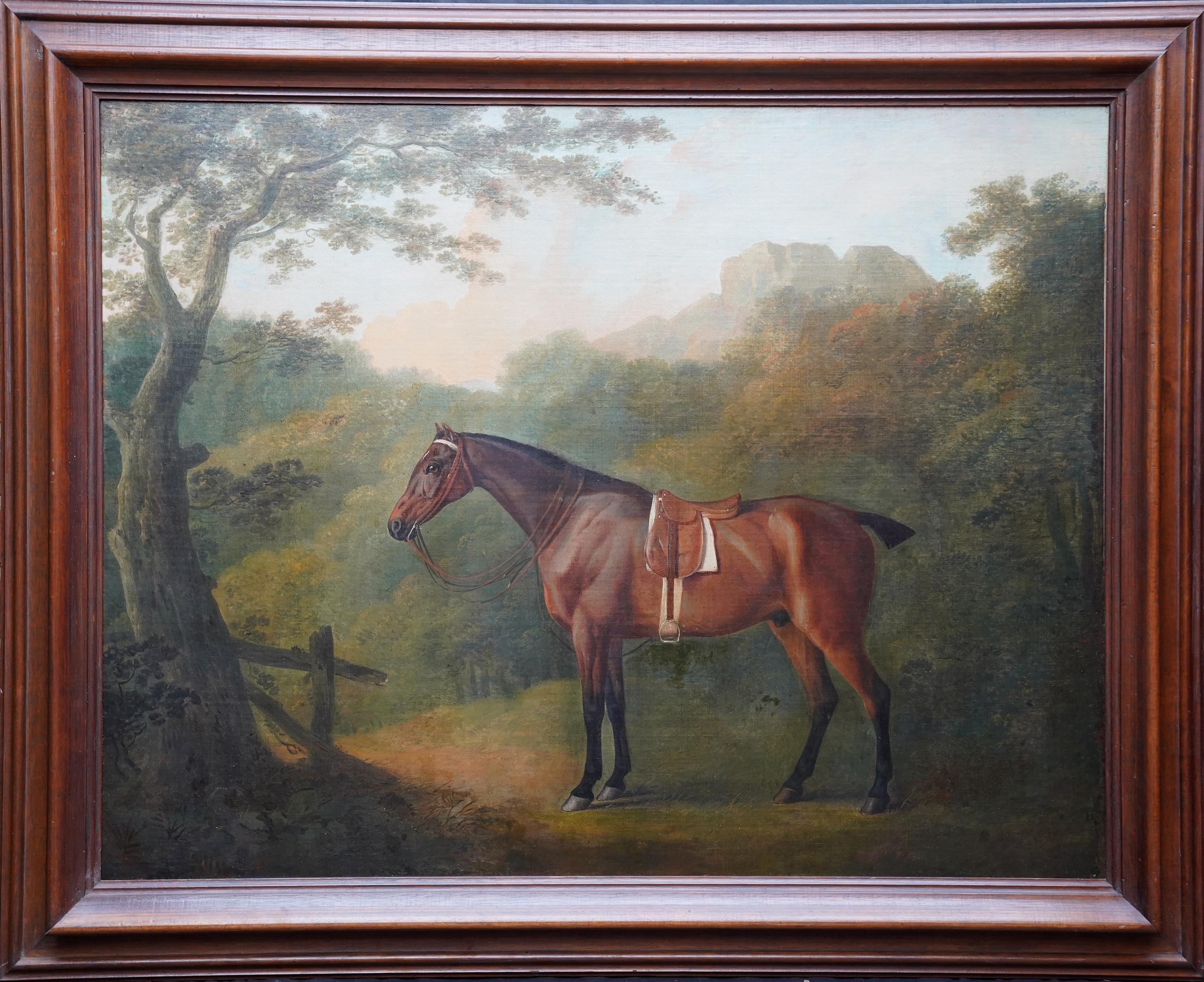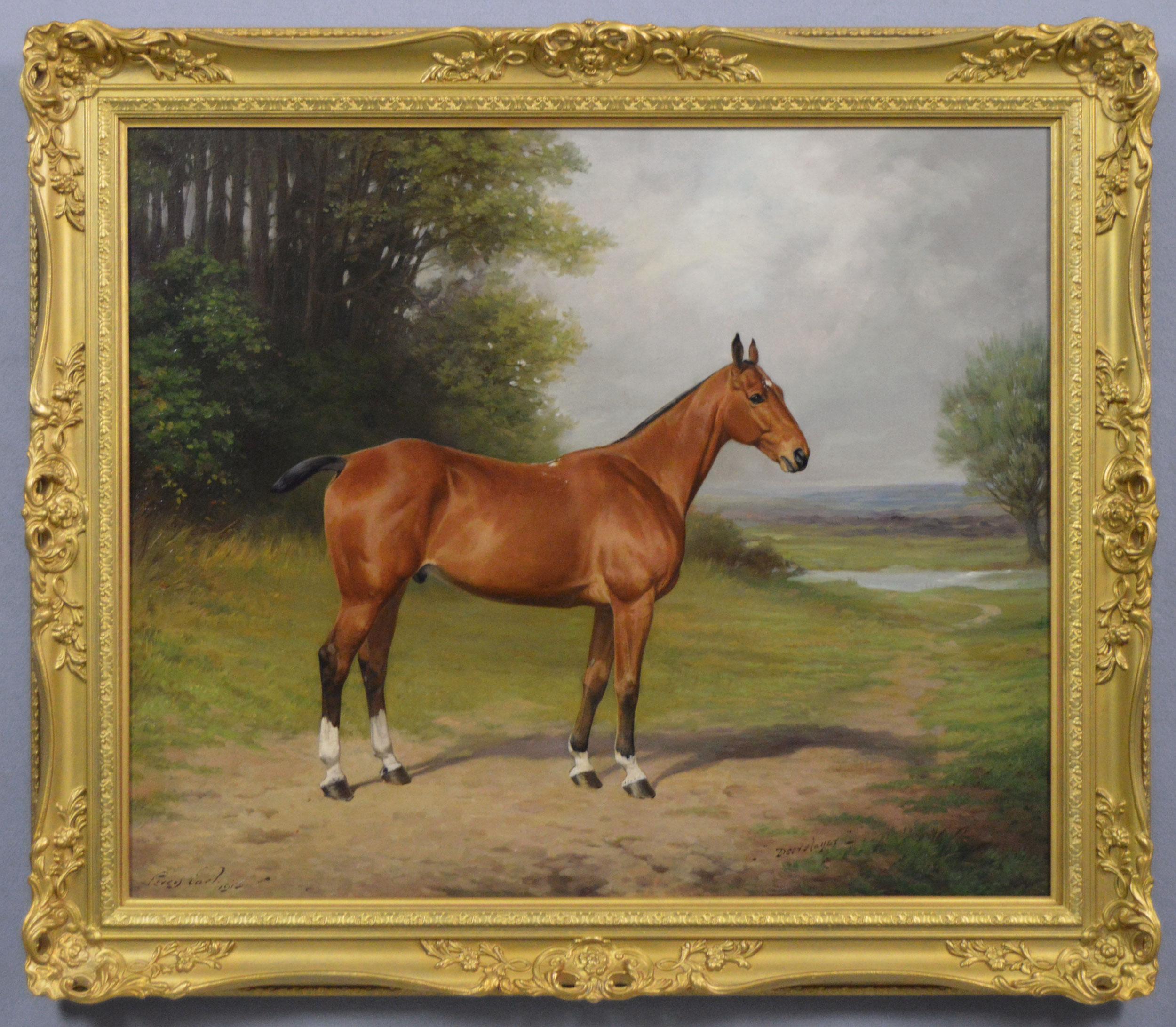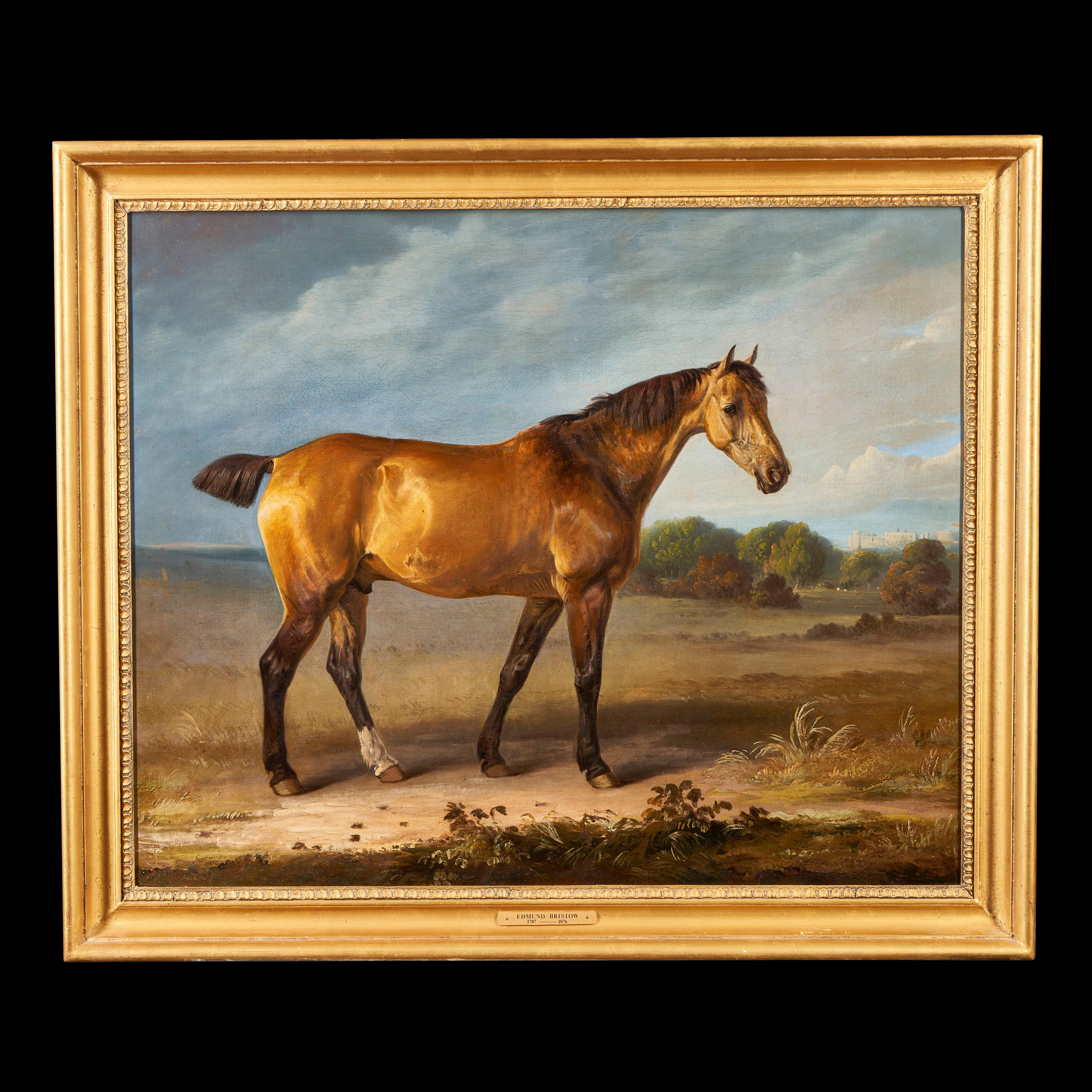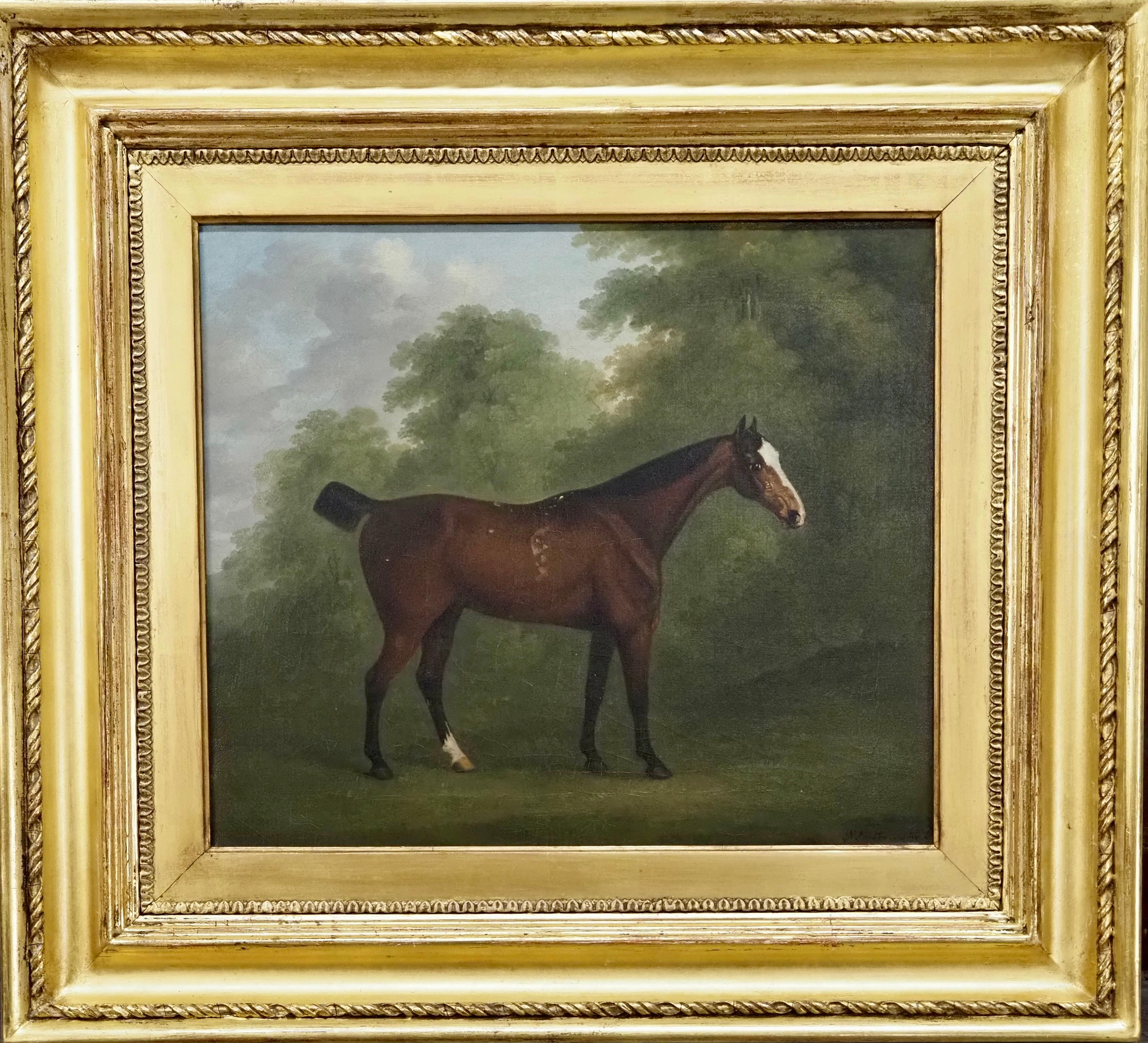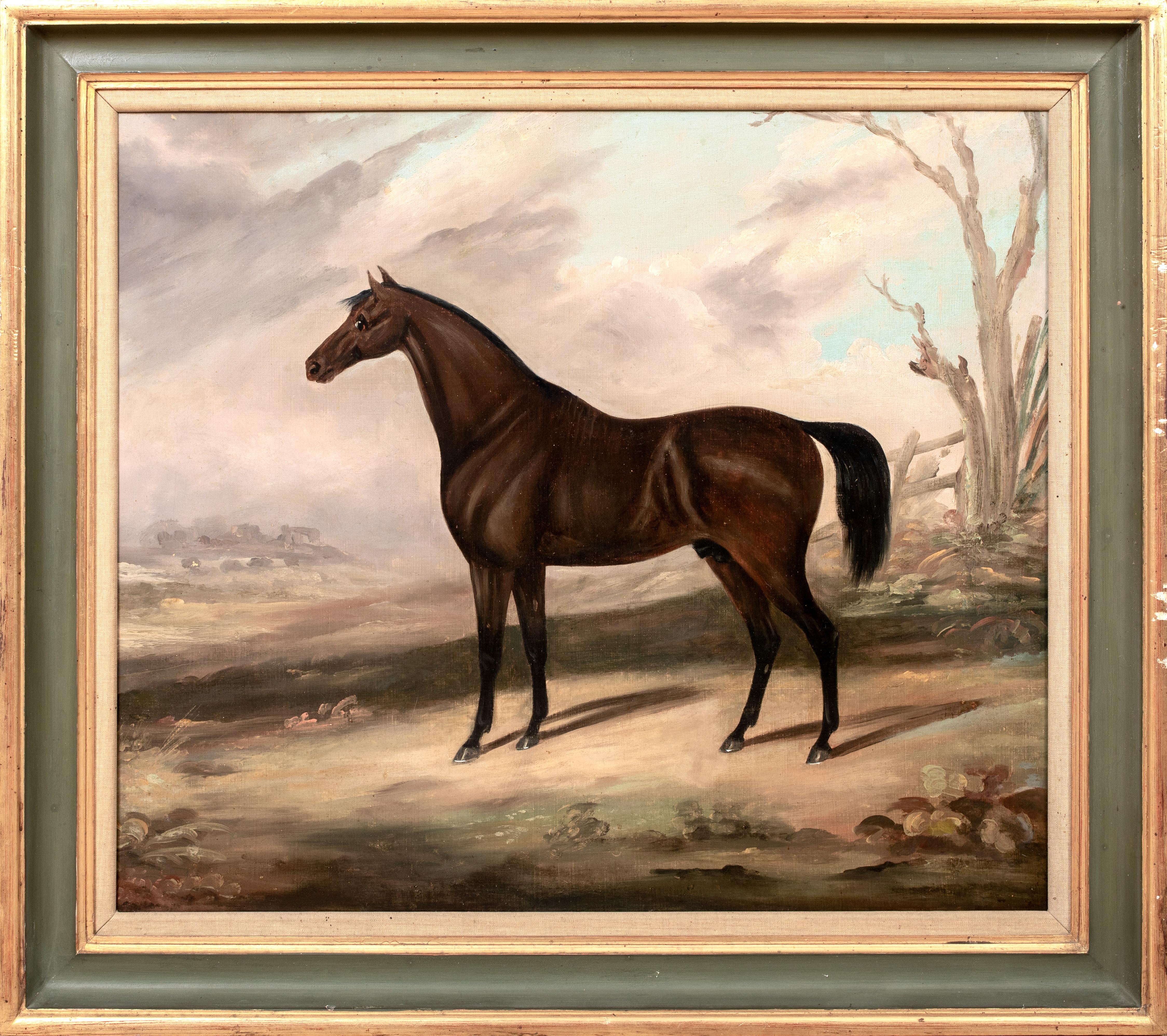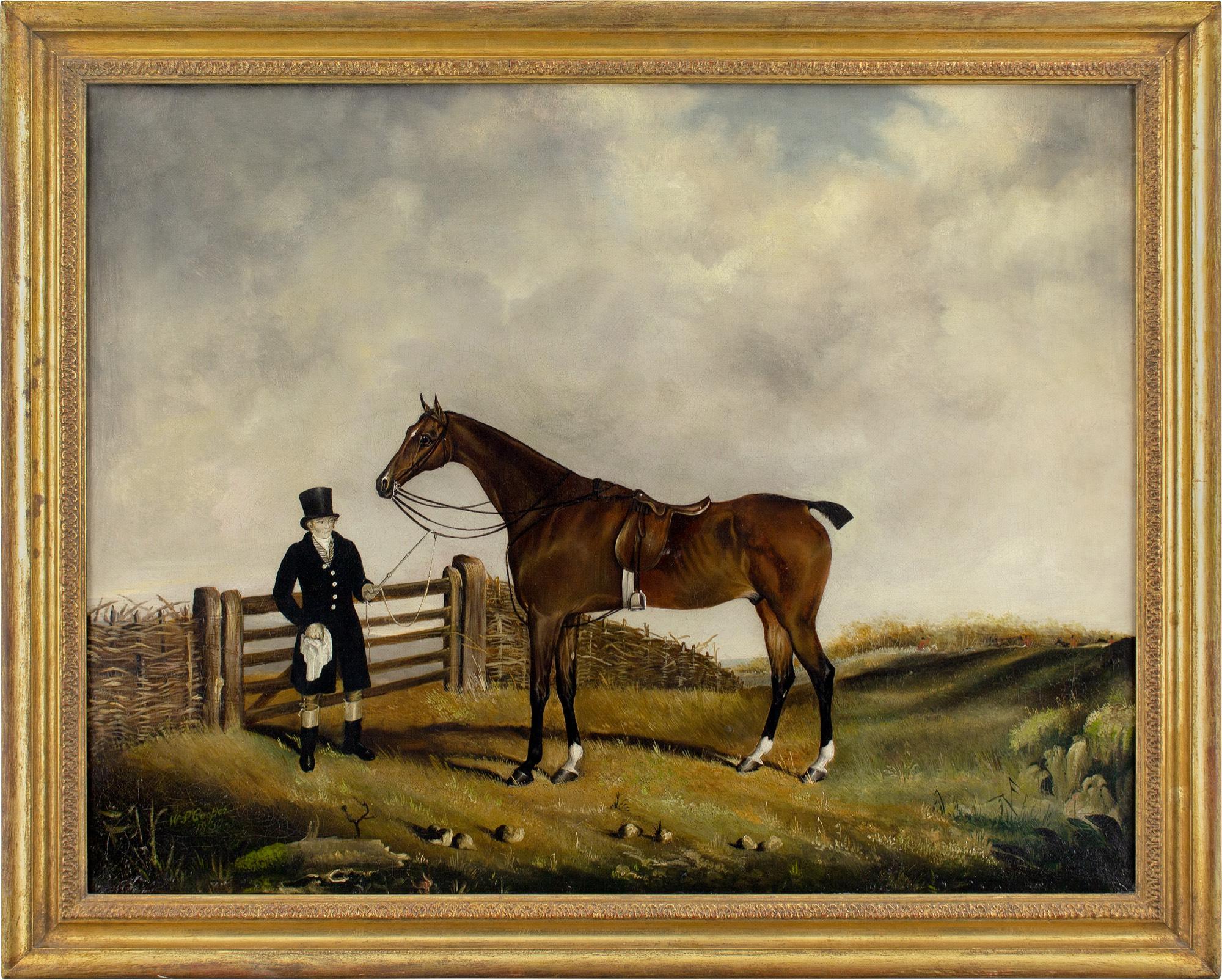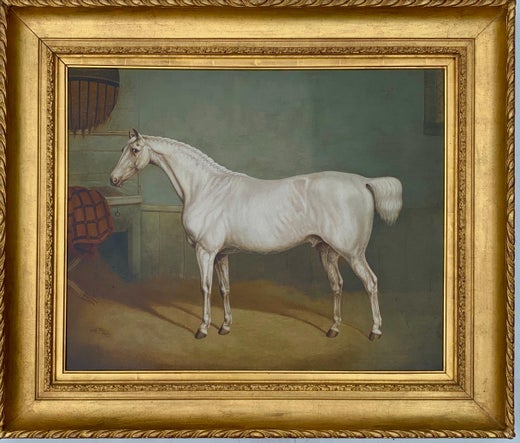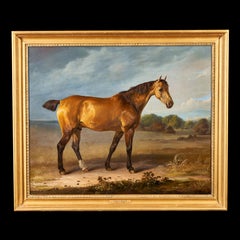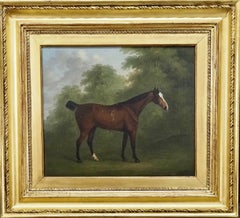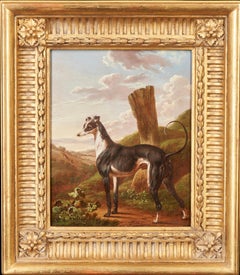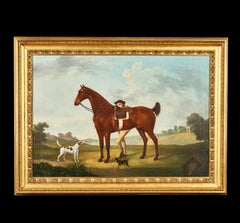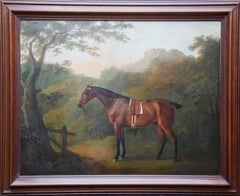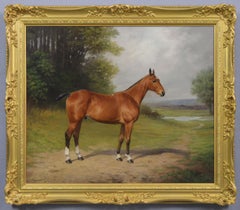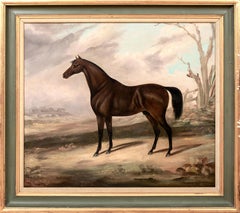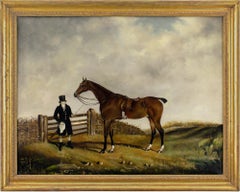Items Similar to A bay hunter in a landscape
Want more images or videos?
Request additional images or videos from the seller
1 of 11
Charles TowneA bay hunter in a landscape
$12,333.79
$19,185.8935% Off
£9,000
£14,00035% Off
€10,499.96
€16,333.2735% Off
CA$16,894.20
CA$26,279.8735% Off
A$18,790.04
A$29,228.9535% Off
CHF 9,811.58
CHF 15,262.4535% Off
MX$228,654.83
MX$355,685.2935% Off
NOK 125,308.80
NOK 194,924.8035% Off
SEK 117,517.55
SEK 182,805.0735% Off
DKK 78,365.24
DKK 121,901.4835% Off
Shipping
Retrieving quote...The 1stDibs Promise:
Authenticity Guarantee,
Money-Back Guarantee,
24-Hour Cancellation
About the Item
Charles Towne (1763-1840)
A bay hunter in a landscape
signed and dated 'Charles Towne Pinxit 1816' lower left
Oil on canvas
Painting Size - 20 x 26
Framed Size - 25 x 31 in
Provenance
The Collection of the late Countess Esterhazy
Charles Towne is the leading Liverpool landscape, animal and sporting painter of the first half of the nineteenth century. In his early work, his drawing is charmingly naive and provincial, and shows an awareness of the contemporary work of Thomas Stringer and, ultimately, George Stubbs, both of whom were from the same geographical area.
By the late 1790's he had developed more sophisticated draughtsmanly skills which are his subsequent hallmark throughout a long career. He was born in Wigan in 1763, but passed most of his working life in Liverpool; his frequent employment in rural Lancashire and Cheshire arose from a wide patronage among the local gentry. He visited London in the late 1790's, where he was noted in Farrington's "Diaries", and it seems likely that it was here that his techniques developed their more sophisticated aspects. His first painting was exhibited at the Royal Academy in 1799. In the next decade he appears to have been itinerant (his name is missing from the Liverpool Directories for these years), but by the end of the decade, he was sufficiently well-known in that City to be a founder, and the Vice-President of Liverpool Academy. He died in Liverpool on 6th January 1840, the possessor of a considerable local and national reputation
- Creator:Charles Towne (1753 - 1840)
- Dimensions:Height: 25 in (63.5 cm)Width: 31 in (78.74 cm)
- Medium:
- Movement & Style:
- Period:
- Condition:
- Gallery Location:Stoke, GB
- Reference Number:1stDibs: LU446313783252
Charles Towne
Charles Towne was an English painter of landscapes, horses and other animals with a particular skill for horse racing and hunting scenes. Born in Wigan, his talent for art was apparent from a young age, and he received some training from John Rathbone in Leeds. By the 1790s, Towne was an established animal painter with style reminiscent of Stubbs. He lived in London from 1799–1804, during which he exhibited at the Royal Academy. Towne's work was well regarded by his contemporaries, including Joseph Farington.

About the Seller
5.0
Recognized Seller
These prestigious sellers are industry leaders and represent the highest echelon for item quality and design.
Platinum Seller
Premium sellers with a 4.7+ rating and 24-hour response times
Established in 2009
1stDibs seller since 2016
181 sales on 1stDibs
Typical response time: 1 hour
Associations
LAPADA - The Association of Arts & Antiques DealersInternational Confederation of Art and Antique Dealers' AssociationsThe British Antique Dealers' Association
- ShippingRetrieving quote...Shipping from: Andover, United Kingdom
- Return Policy
Authenticity Guarantee
In the unlikely event there’s an issue with an item’s authenticity, contact us within 1 year for a full refund. DetailsMoney-Back Guarantee
If your item is not as described, is damaged in transit, or does not arrive, contact us within 7 days for a full refund. Details24-Hour Cancellation
You have a 24-hour grace period in which to reconsider your purchase, with no questions asked.Vetted Professional Sellers
Our world-class sellers must adhere to strict standards for service and quality, maintaining the integrity of our listings.Price-Match Guarantee
If you find that a seller listed the same item for a lower price elsewhere, we’ll match it.Trusted Global Delivery
Our best-in-class carrier network provides specialized shipping options worldwide, including custom delivery.More From This Seller
View AllA bay hunter in a landscape, a view of Windsor castle beyond
By Edmund Bristow
Located in Stoke, Hampshire
Edmund Bristow (1787-1876)
A bay hunter in a landscape, Windsor castle beyond
Signed with initials lower left
Oil on canvas
Canvas Size 22 1/2 x 27 1/2 in
Framed Size 27 x 32 in
Pro...
Category
19th Century Victorian Animal Paintings
Materials
Oil
$10,906 Sale Price
20% Off
A bay horse in a wooded landscape
Located in Stoke, Hampshire
John Nost Sartorius (London 1759-1828)
A bay horse in a wooded landscape
Signed 'J.N.Sartorius' lower right
Oil on canvas
Canvas Size - 12 x 14 in
Framed Size - 19 x 21 in
John Nost...
Category
18th Century Old Masters Animal Paintings
Materials
Oil
$7,143 Sale Price
25% Off
A greyhound in a landscape
By Charles Towne
Located in Stoke, Hampshire
Charles Towne (1763-1840)
A greyhound in a landscape
Signed with initials and dated 'CT 1805' lower right
Oil on panel
Painting size 10 1/2 x 8 1/4 in
Framed size 16 x 14 in
Provena...
Category
19th Century Old Masters Animal Paintings
Materials
Oil
$8,222 Sale Price
20% Off
A groom with a saddled bay hunter and dogs in an extensive landscape
Located in Stoke, Hampshire
Thomas Stringer (1722-1790)
A groom with a saddled bay hunter and dogs, in an extensive landscape
Dated 1754 lower left
Oil on canvas
Unframed size 25 x 36 in
Framed size 31 x 42 in
...
Category
18th Century Old Masters Landscape Paintings
Materials
Oil
$13,978 Sale Price
20% Off
A black stallion in a landscape
By John Frederick Herring Sr.
Located in Stoke, Hampshire
John Frederick Herring Snr (Surrey 1795-1863 Kent)
A black stallion in a landscape
Oil on canvas
Painting Size - 25 x 33 in
Framed Size - 30 x 39 in
Provenance
The Collection of Ch...
Category
19th Century Victorian Animal Paintings
Materials
Oil
Mr Ward on Quicksilver, the hunt beyond
By Richard Barrett Davis
Located in Stoke, Hampshire
Richard Barrett Davis (1782-1854)
Mr Ward on Quicksilver
Oil on canvas
Canvas Size - 25 x 30 in
Provenance
with Ackermann & Son, London;
where purchased by the present owner.
Born...
Category
19th Century Victorian Animal Paintings
Materials
Oil
You May Also Like
Saddled Hunter Horse in a Landscape - British Old Master equine art oil painting
By John Boultbee
Located in London, GB
This large superb British Old Master horse portrait oil painting is by noted artist John Boultbee. Painted circa 1790, the composition is a beautif...
Category
1790s Old Masters Animal Paintings
Materials
Oil
Horse portrait oil painting of a bay hunter in a landscape
Located in Nr Broadway, Worcestershire
Thomas Percy Earl
British, (1874-1947)
Deerslayer
Oil on canvas, signed & dated 1913 & inscribed ‘Deerslayer’
Image size: 24.25 inches x 29.25 inches
Size including frame: 30.5 inch...
Category
20th Century Victorian Animal Paintings
Materials
Canvas, Oil
Dark Bay Hunter IN A Landscape, 19th Century Daniel CLOWES (1774-1829) Large 1
By Daniel Clowes
Located in Blackwater, GB
Dark Bay Hunter IN A Landscape, 19th Century
Daniel CLOWES (1774-1829)
Large 19th Century English dark bay hunter in a landscape, oil on canvas. Excellent quality and condition sid...
Category
19th Century Animal Paintings
Materials
Canvas, Oil
$1,959 Sale Price
65% Off
W.S. Cooper, A Bay Hunter & Groom In A Landscape
Located in Cheltenham, GB
This early 19th-century oil painting by English artist W.S. Cooper (act. 1832-1834) depicts a bay hunter and groom in a landscape with a hunt beyond.
Once hanging in a proud English...
Category
1830s Victorian Animal Paintings
Materials
Canvas, Oil
Oil Painting by Cornelius Jansen Walter Winter "A Favourite Hunter"
Located in Mere, GB
Oil Painting by Cornelius Jansen Walter Winter "A Favourite Hunter" 1817- 1891. Born in Bungay the son of a stained glass painter. Pupil of Edwin Cooper of Beccles. Painted Norfolk A...
Category
19th Century Animal Paintings
Materials
Oil
Antique English 19th century Horse, Hunter with terrier in a landscape.
By James Barenger
Located in Woodbury, CT
Barenger was born in Kentish Town, London, the son of James Barenger Snr., a metal chaser and artist who exhibited paintings of insects at the Society of Artists and Royal Academy, a...
Category
1830s Victorian Animal Paintings
Materials
Canvas, Oil
$10,500 Sale Price
40% Off
Free Shipping
More Ways To Browse
Antique Hunters
Canvas Landscape Paintings By Hunter
Countess Painting
1816 Painting
1790 Oil Painting
19th Century Provincial Oil Painting
Charles Towne
Charles Towne Oil Painting
George Towne
Eye Miniature
Poppy Oil Painting
Western Cowboy Art Paintings
Flower Meadow
Evening Sunset Painting
Framed Oil Painting 4 X 6
Italian Lake Painting
Romanian Landscape
Lone Ones
